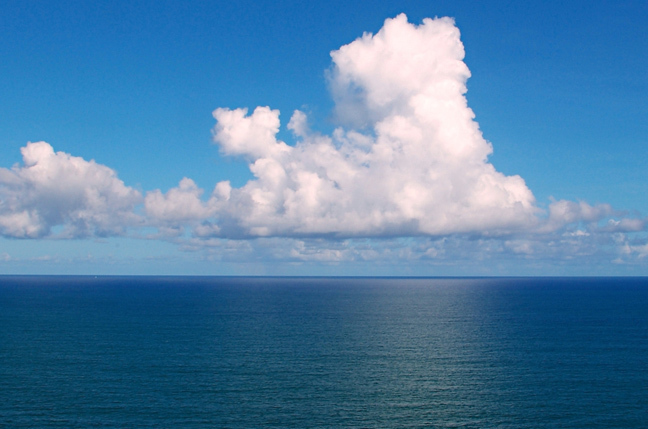As world leaders get ready to head to Paris for the latest pact on cutting CO2 emissions, it has emerged that there isn't as much urgency about the matter as had been thought.
A team of top-level atmospheric chemistry boffins from France and Germany say they have identified a new process by which vast amounts of volatile organic compounds (VOCs) are emitted into the atmosphere from the sea - a process which was unknown until now, meaning that existing climate models do not take account of it.
The effect of VOCs in the air is to cool the climate down, and thus climate models used today predict more warming than can actually be expected. Indeed, global temperatures have actually been stable for more than fifteen years, a circumstance which was not predicted by climate models and which climate science is still struggling to assmilate.
In essence, the new research shows that a key VOC, isoprene, is not only produced by living organisms (for instance plants and trees on land and plankton in the sea) as had previously been assumed. It is also produced in the "microlayer" at the top of the ocean by the action of sunlight on floating chemicals - no life being necessary. And it is produced in this way in very large amounts.
According to an announcement just issued by the German government's Leibniz Institute for Tropospheric Research:
Atmospheric chemists from France and Germany, however, can now show that isoprene can also be formed without biological sources in the surface film of the oceans by sunlight and so explain the large discrepancy between field measurements and models. The new identified photochemical reaction is therefore important to improve the climate models.
Global models at the moment assume total emissions of isoprene from all sources - trees, plants, plankton, the lot - of around 1.9 megatons per year. But, according to the new research, the newly discovered "abiotic" process releases as much as 3.5 megatons on its own - which "could explain the recent disagreements" between models and reality.
"We were able for the first time to trace back the production of this important aerosol precursor to abiotic sources. So far global calculations consider only biological sources," explains Dr Christian George from French lab the Institute of Catalysis and Environment, in Lyon.
VOCs such as isoprene are known to be a powerful factor in the climate, as they cause the formation of aerosol particles. Some kinds of aerosol, for instance black soot, warm the world up: but the ones resulting from VOCs actually cool it down substantially by acting as nuclei for the formation of clouds. It has
previously been suggested that production of VOCs by pine forests could be a negative feedback so powerful that it "limits climate change from reaching such levels that it could become really a problem in the world."
With the discovery of the new abiotic sea process, the idea that cutting carbon emissions may not be all that urgent is looking stronger. That's probably good news, as it has emerged lately that efforts to cut carbon emissions to date are having the unfortunate side effect of
poisoning us all.
The new research is
published here courtesy of the learned journal
Environmental Science and Technology, and as the Leibniz Institute notes: "Because of the great importance this paper will be open access". ®





No comments:
Post a Comment